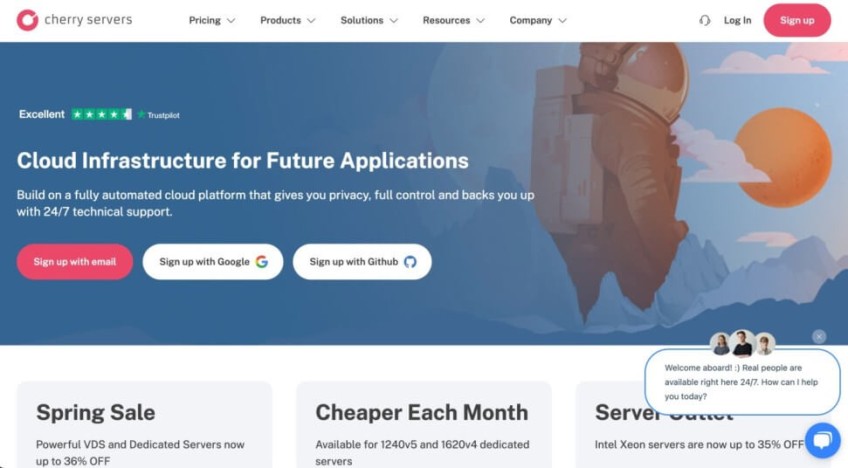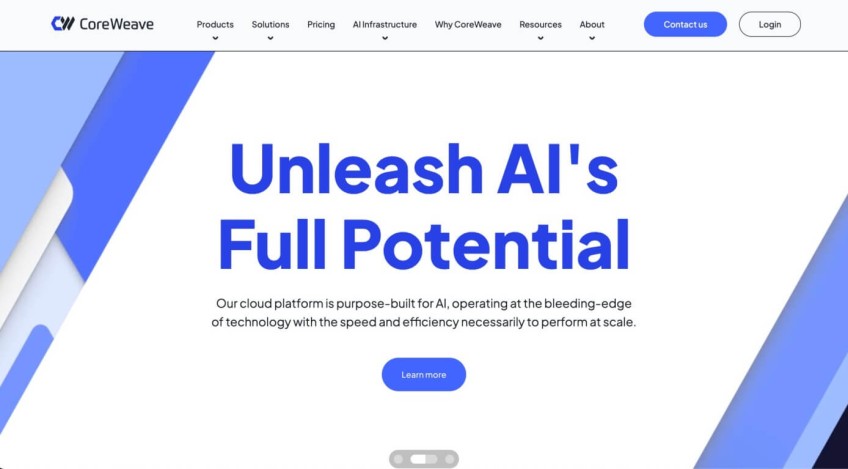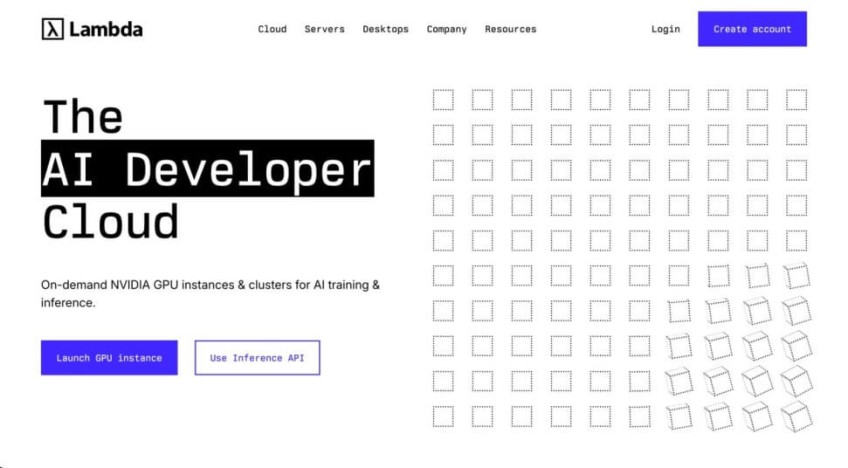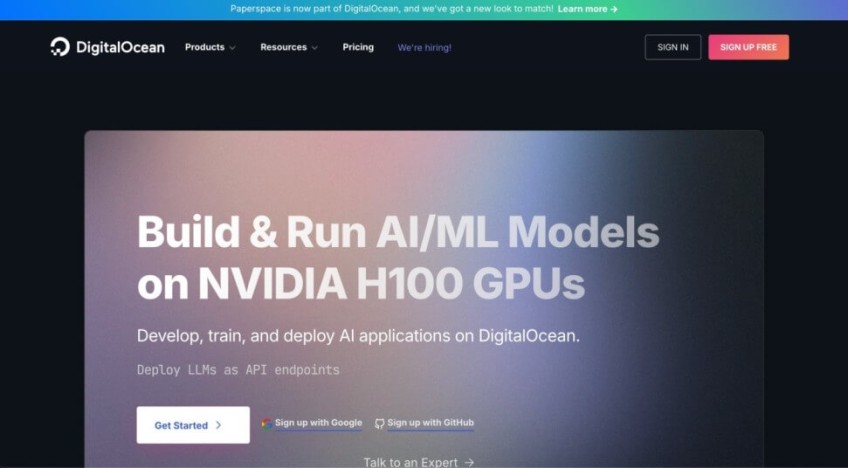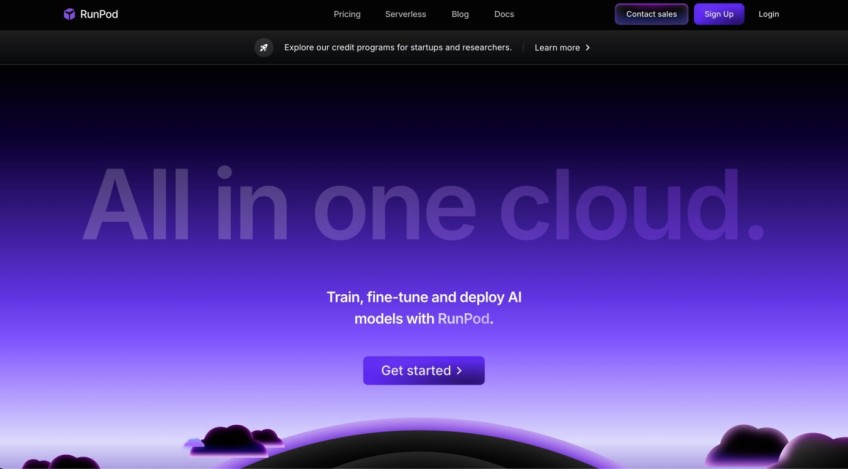5 Best GPU Server Providers for AI

Artificial intelligence (AI) models require substantial computational power, and GPUs are at the core of this demand. Training large language models (LLMs), fine-tuning vision systems, or running inference at scale all demand serious GPU power. The provider you choose directly affects how efficiently your workloads run and how much they cost.
With numerous providers offering various solutions, identifying the most suitable one can be challenging. This article evaluates the five best GPU server providers for AI, focusing on their performance, features, and pricing to assist you in making an informed decision.
#What to look for in a GPU server provider
To run AI workloads effectively, the right GPU server must offer performance, flexibility, and long-term value. These are the five things that matter most:
-
High-performance GPUs
AI training needs powerful GPUs like the NVIDIA A100, H100, or L40S. Large memory, NVLink support, and fast interconnects help speed up compute-heavy tasks.
-
Flexible pricing and billing
GPU infrastructure should be affordable at scale. Choose a provider with hourly or per-minute billing, spot instances, and low data transfer fees.
-
Scalable infrastructure options
AI workflows vary—some need short-term VMs, others require long-running bare-metal servers. A good provider supports both, with multiple GPU tiers and memory sizes.
-
Reliable support and tools
Choose providers with fast technical support, clear documentation, and automation tools like APIs or Terraform. Developer experience should not be an afterthought.
-
Frequent hardware and software updates
AI moves quickly. Providers that offer the latest GPU models and support Docker, Kubernetes, and CI/CD tools make it easier to scale and adapt.
#Top 5 GPU server providers for AI
The demand for reliable GPU infrastructure has grown quickly as AI models continue to scale. This section highlights 5 of the top GPU server providers used in AI today.
#Cherry Servers
Cherry Servers is a great fit for teams that need full control over high-performance GPU infrastructure. Their GPU servers run on single-tenant, dedicated hardware with no shared environments and no hypervisor layer in the way. This is particularly useful for deep learning, high-performance computing, and any workload where consistent speed and customization matter.
They are based in Lithuania and have global data center coverage. Cherry Servers also backs their platform with automation-friendly tools, a generous bandwidth policy, and a pricing structure built around transparency.
#Key features
Below are some of the features that make Cherry Servers a strong choice for AI teams and engineers.
-
Dedicated, bare-metal performance with no shared overhead
Every server is single-tenant, giving you full access to the underlying hardware without virtualization. This improves performance and removes the unpredictability that comes with shared environments.
-
Fully customizable server configurations
You can choose exactly what you need, be it GPU model, CPU type, memory size, storage capacity, and operating system. This level of flexibility makes it easy to match your infrastructure to your workload.
-
Developer automation tools
Cherry Servers supports a full REST API, along with official Terraform and Ansible modules. This makes it easy to provision and manage infrastructure programmatically, which is ideal for teams using CI/CD pipelines or Infrastructure as Code.
-
Generous bandwidth limits
Depending on your server configuration, you get between 30 and 100 terabytes of outbound traffic per month. That is more than enough for most training or inference jobs, and it helps avoid surprise costs.
-
Deploy GPU servers in under 15 minutes
Most setups are ready in under 15 minutes. You can either choose from prebuilt server templates or customize your own and deploy it quickly.
-
24/7 infrastructure support from real engineers
Support is available at any time, and you get access to engineers who understand the infrastructure. This is particularly useful when running critical workloads that cannot afford long downtime.
#Pros
- Bare-metal infrastructure with no virtualization layers.
- Transparent pricing and multiple billing options (hourly, monthly, yearly).
- Automation support via REST API, Terraform, and Ansible.
- High uptime SLA (99.97%) with credit policy.
- Strong fit for stable AI workloads like model training and rendering.
#Cons
- No spot instances or elastic autoscaling.
- Limited global footprint compared to hyperscale clouds.
- Less suited for bursty, short-term workloads.
#Pricing
Cherry Servers’ AI-grade GPU pricing starts at $0.30/hr and goes up to $1.44/hr for top-tier models like the A100. Billing is available hourly, monthly, or yearly. Payment methods include card, PayPal, and cryptocurrency. New users also get a 7-day money-back guarantee.
Power your AI, ML, and HPC workloads with high-performance GPU servers. Enjoy customizable setups, pay-as-you-go pricing, and 24/7 support.
#CoreWeave
CoreWeave is a U.S.-based cloud platform built from the ground up for AI, machine learning, and other compute-heavy tasks. They offer fast access to high-end GPUs, scale easily across hundreds of nodes, and come with no data egress fees. CoreWeave is optimized for modern AI workflows with native support for Kubernetes, Slurm, and containerized environments.
#Key features
CoreWeave focuses on performance, scale, and developer flexibility. Here are some of their key features.
-
Access to high-end GPUs
CoreWeave supports NVIDIA H100, A100, A40, and RTX A6000 GPUs. Newer models like Blackwell and NVL72 are also available early.
-
Scalable infrastructure
The platform is designed for large-scale training and inference, with support for multi-GPU clusters, NVLink, and InfiniBand networking.
-
Zero egress fees
You pay nothing to move data out, which is ideal for handling large models and datasets.
-
AI-native environment
Built-in support for Kubernetes, Slurm, and NGC containers makes it easy to deploy and manage complex workloads.
-
Flexible resource allocation
You can choose between full GPUs, fractional access, or reserved capacity, depending on your project’s needs and budget.
#Pros
- Designed specifically for AI and HPC workloads.
- High availability of the latest NVIDIA GPUs.
- No egress fees for outbound data.
#Cons
- U.S. regions only.
- No spot instance marketplace.
- Best suited for teams and enterprise users.
#Pricing
CoreWeave's pricing ranges from $0.24 to $4.76/hr for H100 and A100 GPUs, with lower rates for A40 or RTX models. Discounts are available through reserved capacity, and fractional pricing helps reduce cost for smaller jobs.
Also read: 5 Best GPU Server Providers for Deep Learning
#Lambda Labs
Lambda Labs is a cloud platform built for AI and deep learning teams who want fast, simple access to powerful GPUs, without the extra layers of typical cloud services. They focus on giving developers full control of high-performance servers while keeping the experience clean and straightforward.
#Key features
Lambda Labs keeps things simple while offering the tools and performance needed for serious AI work.
-
Preloaded AI workstations
Every instance comes with Lambda Stack, which includes PyTorch, TensorFlow, CUDA, and drivers—ready for immediate use.
-
Scalable multi-GPU clusters
Easily scale from single GPUs to large clusters with InfiniBand for distributed training.
-
Full control, no overhead
You get root access via SSH, just like managing your own server—no complex dashboards or lock-ins.
-
Simple cluster deployment
Lambda makes it easy to launch multi-GPU clusters with a single click. This helps teams get started with large-scale training jobs quickly, without going through a complex setup.
-
No data egress fees
You can move models and datasets out of the cloud at no extra cost.
#Pros
- Purpose-built for AI and deep learning.
- Full control with minimal abstraction.
- Pre-installed deep learning stack saves setup time.
- Supports large-scale training with low-latency networking.
- No fees for outbound data.
#Cons
- Limited to U.S. regions.
- No spot pricing or fractional GPU pricing.
- Best for users comfortable with command-line tools.
- Lacks managed services or orchestration tools.
#Pricing
Lambda's H100 80GB starts at $2.49/hr, while A100 40GB runs at $1.29/hr. Lower-cost GPUs like A6000 and A10 are also available. Billing is by the second, with no long-term commitment. Reserved capacity can be arranged through custom deals.
#Paperspace
Paperspace, now part of DigitalOcean, makes it easy for developers to jump into GPU computing without dealing with complex infrastructure. With affordable GPUs, a clean interface, and their Gradient notebook platform, they lower the barrier for small teams, students, and anyone testing AI models or prototypes.
#Key features
Paperspace focuses on ease of use, cost flexibility, and an accessible development experience.
-
Notebook-first development
Gradient gives you a ready-to-go notebook environment, preloaded with TensorFlow, PyTorch, and more—no setup needed.
-
Flexible GPU options
You can choose from low-cost GPUs like Quadro P4000 to top-tier models like A100 and H100, depending on your budget and workload.
-
Snapshot and version control
Save and restore your work with snapshots, making it easy to track experiments or roll back changes.
-
User-friendly interface
Manage everything through a simple dashboard or CLI, keeping it accessible for beginners and efficient for pros.
-
Seamless DigitalOcean integration
Since being acquired by DigitalOcean, Paperspace has improved access to features like persistent storage, networking, and backups. It is a good fit if you are already part of that ecosystem.
#Pros
- Ready-to-use notebook environments.
- Wide range of GPU choices for all budgets.
- Easy version control with snapshots.
- Beginner-friendly UI with CLI support.
- Integrates well with DigitalOcean services.
#Cons
- Limited for large-scale or distributed training.
- Queue times can happen during busy hours.
- Less control over hardware tuning.
- Lacks advanced automation features.
#Pricing
Paperspace's H100 80GB runs at around $5.95/hr, while A100 80GB is about $1.15/hr. Older GPUs like Quadro P4000 start at $0.51/hr. Billing is hourly, with options for monthly discounts. Gradient also offers a free tier for basic usage.
#RunPod
RunPod takes a different approach from most GPU platforms. Instead of relying solely on centralized data centers, it gives users a choice between traditional cloud infrastructure and a decentralized “Community Cloud” powered by independent providers. This makes it one of the most flexible and cost-efficient GPU platforms available, especially for developers who want to spin up containers quickly or run short-lived training and inference jobs without paying premium rates. With support for both serverless workloads and bare-metal machines, RunPod works well whether you are experimenting, scaling up, or deploying something to production.
#Key features
RunPod is built around making GPU access fast, flexible, and easy to manage. Here are their core features.
-
Serverless GPU containers
You can deploy GPU workloads in seconds using RunPod’s container-based pods. These environments launch almost instantly and automatically scale down when idle, making them ideal for short-lived jobs or real-time inference.
-
Community and bare-metal GPUs
You can pick from dedicated servers or lower-cost Community Cloud GPUs provided by independent hosts.
-
Global deployment options
RunPod supports data centers in North America, Europe, and Asia-Pacific, with more regions planned.
-
Automation-ready tools
You can manage workloads using a simple dashboard, CLI, or the GraphQL API. RunPod also integrates with tools like SkyPilot and Terraform.
-
One-click templates
The RunPod Marketplace includes pre-built templates for popular tools like Jupyter, Stable Diffusion, and LLMs. These can be deployed in one click, saving time when setting up repeated workflows.
#Pros
- Instant launch with serverless containers.
- Flexible mix of community and dedicated GPUs.
- Autoscaling and pause/resume for real-time cost control.
- API-first with automation support.
- Multi-region support for global teams.
#Cons
- Community Cloud performance can vary.
- Not suited for strict compliance needs.
- Some bare-metal servers have longer setup times.
- Workflow may feel less streamlined for large teams.
#Pricing
RunPod pricing depends on the GPU model and hosting type. Community-hosted RTX 3090 instances can be as low as $0.22/hour, while enterprise H100s range from $2.60 to $4.10/hour. Spot instances offer additional savings, and billing is per-second on serverless workloads. Bare-metal servers are also available at daily or monthly rates, with discounts for longer commitments.
#Conclusion
There is no single best GPU server provider for every project. What works well for training massive AI models might not be the right fit for running quick experiments or keeping costs low on smaller jobs. It all comes down to what you are building, how fast you need to move, and the level of control you want over your environment.
Taking the time to understand what each provider does best can help you avoid overspending or running into performance limits later on. The key is to pick the one that feels right for your current needs while leaving room to grow.
Starting at just $3.24 / month, get virtual servers with top-tier performance.

